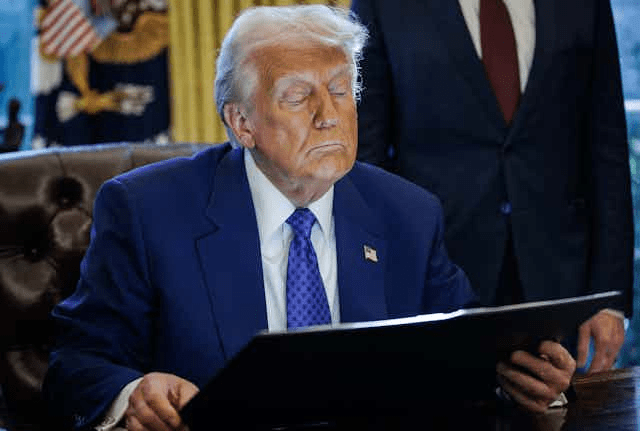Last week, President Trump declared that he would impose a 20 percent tariff on goods from the European Union, sending shockwaves throughout the 27-nation bloc—a significant development in an escalating trade conflict that threatens to drive a wedge between close allies....CONTINUE READING THE ARTICLE FROM THE SOURCE>>>
In response, Europe is set to launch its first countermove this week, with more actions likely to follow.
E.U. officials have been busy crafting a list of retaliatory tariffs, which they aim to implement on April 15. On Monday, they will present their proposals to the foreign and trade ministers of member states in Luxembourg, with a vote anticipated on Wednesday.
These tariffs will counter previous U.S. steel and aluminum duties and are expected to cover a wide array of products, from whiskey and motorcycles to boats and soybeans. However, these tariffs will only mark the beginning of Europe’s strategy in response to Mr. Trump’s tariff implementation.
European officials are also planning further responses to the car tariffs announced in late March, alongside the newly proposed blanket tariffs of 20 percent from Mr. Trump.
E.U. leaders are adopting a phased approach to their retaliation for two main reasons. Firstly, they needed time to assess the series of announcements from the White House, aiming to craft a response that would inflict maximum damage on the U.S. while minimizing negative impacts on European consumers and businesses.
Secondly, by spacing out their retaliation, they aim to give the Trump administration an opportunity to return to negotiations, as their ultimate aim remains to establish a deal that prevents a full-blown trade war.
“The E.U. is committed to meaningful negotiations but is also ready to protect our interests,” Maros Sefcovic, the bloc’s trade commissioner, stated on social media after a “frank” two-hour meeting with his U.S. counterparts on Friday night.
As the trade dispute intensifies, the stakes are significant. The European Union stands as one of America’s key trading partners, and the United States represents the largest export market for European products.
Given this close relationship, retaliating against American tariffs is expected to be a painful endeavor, likely resulting in increased costs for European companies and consumers on the affected goods.
European officials are aware that an escalating trade dispute could be detrimental to both sides of the Atlantic, which is why they have adjusted their lists: Officials sought feedback from various countries across the continent.
For instance, a proposed list that included whiskey tariffs was initially set to take effect on March 31, but was postponed for further adjustments after Mr. Trump threatened to impose a 200 percent tariff on all European alcohol entering the United States, a move that would devastate French and Italian vintners.
This delay followed recommendations from officials—including those from France—who cautioned against provoking American retaliation through whiskey tariffs.
This situation highlighted the difficulty in maintaining a cohesive and united front in responding to tariffs. Nations across the continent have varying economic priorities and different thresholds for retaliation against the U.S.
While some northern European nations assert that the E.U. must respond assertively, Italian Prime Minister Giorgia Meloni described the notion that Italy should choose between the U.S. and the E.U. as “childish” and has advised against severe retaliation.
Initially, E.U. officials aimed to avoid a trade conflict entirely.
Last fall and early this year, they floated incentives—such as increased purchases of American liquefied natural gas—to their American counterparts in hopes of averting a standoff.
Unfortunately, that strategy did not succeed. Instead, Washington adopted a more aggressive stance than many had anticipated, prompting European policymakers to quickly devise a plan.
Significantly, European leaders are considering retaliating against American service exports, particularly targeting major technology firms like Google that have substantial business operations in the E.U.
Several European diplomats have indicated that targeting tech companies is a distinct possibility should the trade conflict escalate. A French official publicly suggested last week that online services could be among the first targets.
Still, the primary objective remains to reach an agreement.
Elon Musk, the technology entrepreneur and a close advisor to Mr. Trump, expressed hope on Saturday that Europe and the U.S. would eventually “move to a zero-tariff situation, effectively creating a free-trade zone,” during a videoconference with Italy’s far-right League party in Florence.
European officials have shown readiness to reduce tariffs on cars and other goods, so lowering duties in certain sectors could be on the table if the U.S. is open to discussions.
However, reaching a resolution may require time. On Sunday, Treasury Secretary Scott Bessent mentioned during a televised interview that issues with trading partners are not the “kind of thing you can negotiate away in days or weeks…CONTINUE READING>>


